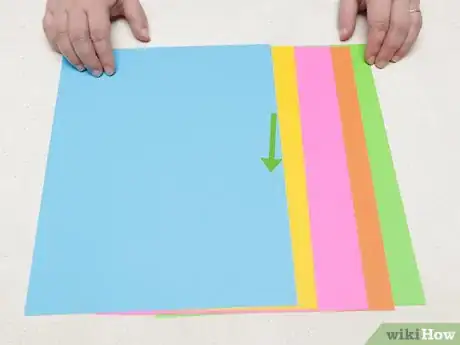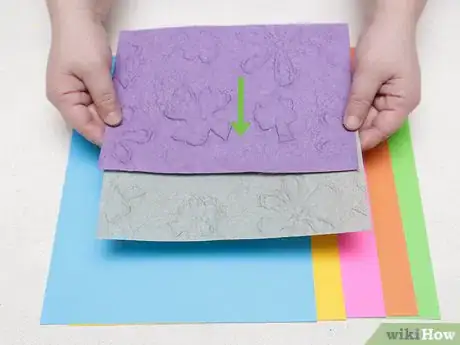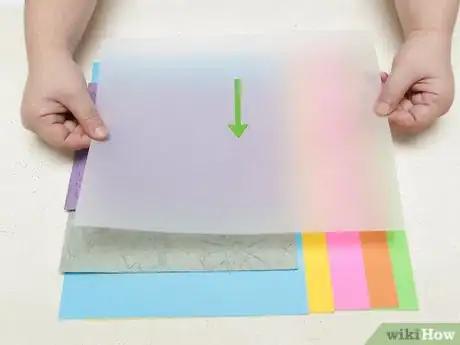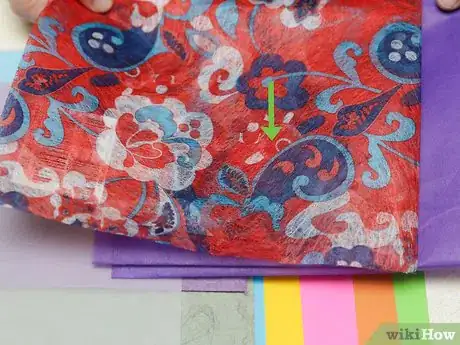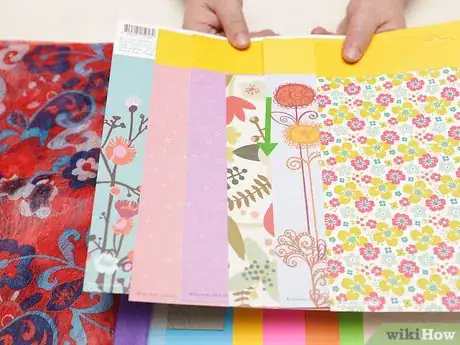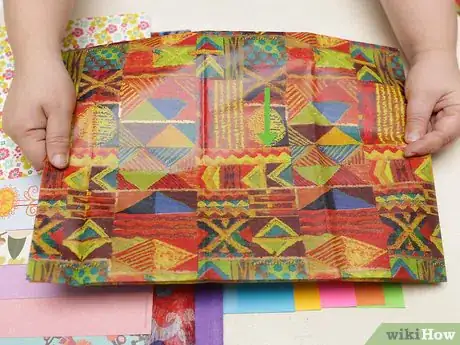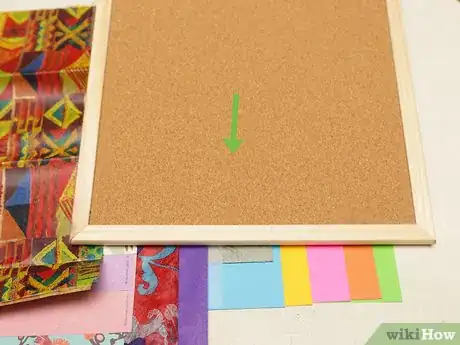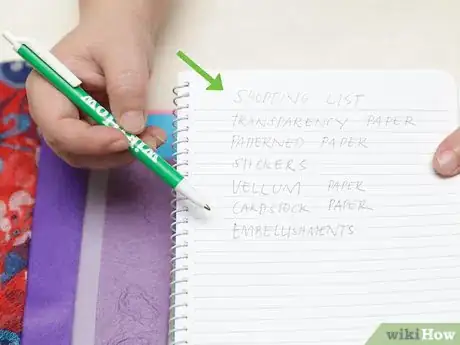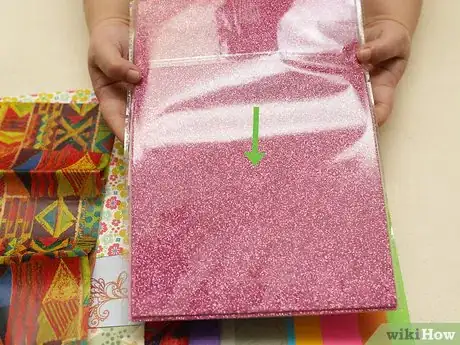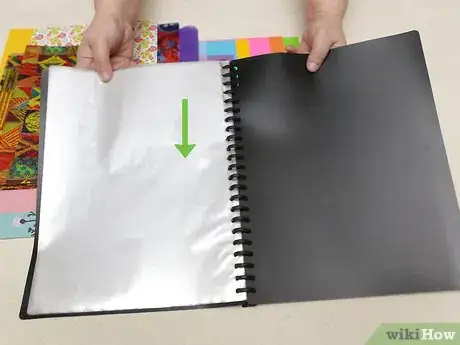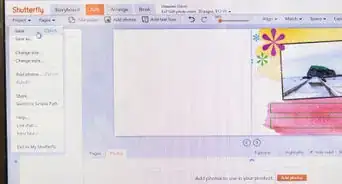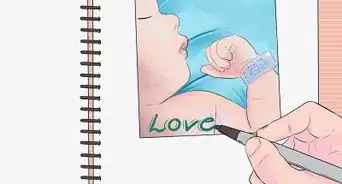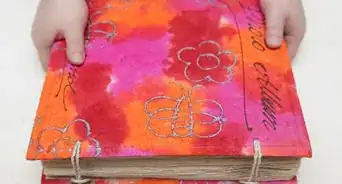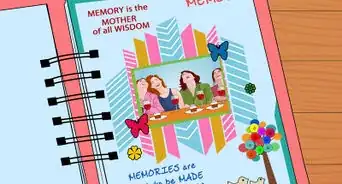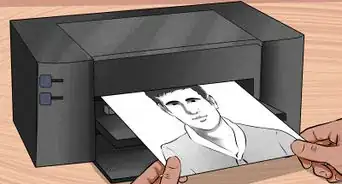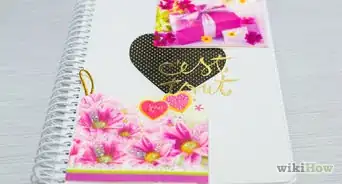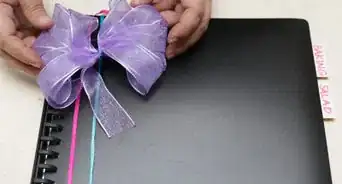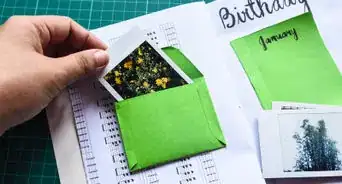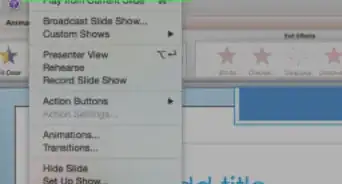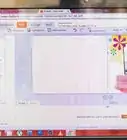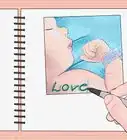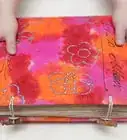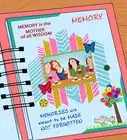This article was co-authored by wikiHow Staff. Our trained team of editors and researchers validate articles for accuracy and comprehensiveness. wikiHow's Content Management Team carefully monitors the work from our editorial staff to ensure that each article is backed by trusted research and meets our high quality standards.
There are 8 references cited in this article, which can be found at the bottom of the page.
This article has been viewed 56,593 times.
Learn more...
The most overwhelming and beautiful aisle in your scrapbooking supply store is probably the paper aisle. Scrapbooking paper comes in all colors of the rainbow and in too many patterns to count. If there is an occasion to scrapbook, there is most certainly a paper to match your theme, but with all the choices, it is easy to leave the store with papers you will never use and without the kind you really need the most.
Steps
Picking Out Background Paper
-
1Select plain cardstock paper that supports your color story. Acid-free cardstock is a staple of scrapbooking. It is a stiff, heavy paper that can withstand the weight of embellishments, photos, and memorabilia. These characteristics make it ideal to use as a background for your album’s pages. Cardstock is available in every imaginable solid color, texture, and finish. When you select your cardstock, pick out colors, textures, and finishes that complement your scrapbook’s color story—the palette of colors you choose to use in the album.
-
2Purchase patterned paper that supports your theme. Scrapbookers rely on acid-free patterned paper to help them tell their narrative, express their theme, and unite their album. The patterns you select should reflect your theme and align with your color story. This lightweight paper is perfect for accents and use as a background.
- You may choose patterns that clearly expresses your theme—palm trees for tropical vacations or ballerinas for a dance recital—or you can pick paper with an abstract or geometrical pattern that will work for a variety of pages within your album.
- If you struggle to mix and match patterns and colors, you can purchase sets of printed paper.[3]
Advertisement -
3Experiment with transparency paper. In addition to using solid and patterned paper, scrapbookers also incorporate transparent sheets of acetate paper into their albums. Transparency paper may be completely see through or contain a printed pattern. You may use this paper as an overlay or for a background.
- In an effort to keep your album cohesive, the transparency paper you purchase should match the cardstock and patterned paper you select for your project. Do not purchase transparency paper that is unrelated to your theme and/or color palette.[4]
-
4Purchase a curated paper collection. Scrapbooking aisles provide consumers with a myriad of options, but don't allow the seemingly endless options to overwhelm you. If you are struggling to mix and match patterns, colors, and even paper types for you backgrounds, opt to purchase a curated pack of paper. Every pattern and color was carefully selected to complement the other options within the pack. A collection of paper will give you a good starting point.
- Most packs of curated paper have a line of matching embellishments.[5]
Choosing Paper for Embellishments
-
1Add decorative elements with die cut paper. Die-cut paper is similar in purpose to a sticker. It is a pre-cut and pre-printed design sold in a variety of interesting shapes—from footballs and softballs to doilies and tea cups. Scrapbookers incorporate die-cut paper into their albums as large decorative elements and accents.
- Select die-cut paper that aligns with the theme of your album and helps move your narrative forward.[6]
- If you are interested in making your own die-cuts, you may purchase a machine or a home-kit. Die-cut machines are relatively inexpensive and they allow you to create custom embellishments for your album.
-
2Soften and accentuate your album with vellum. Vellum paper is translucent. This thin, yet durable, product is sold in an assortment of colors, patterns, and textures. It is ideal for layering over other elements, such as pictures, text, and bold colors.
- In addition to layering it over other items, you can stamp, emboss, and print on vellum paper.
- Select colors, patterns, and textures that make sense with the theme and palette of your album.[7]
-
3Create embellishments with chipboard. The rigidity and thickness of chipboard makes it an ideal medium for dimensional embellishments. You can purchase pre-cut chipboard designs or cut your own embellishments out of sheets of chipboard. This product is available in a variety of colors and thicknesses.
- The thickness of chipboard is measured in points. The thicknesses include: “Light” (20 pt., approximately the thickness of a cereal box); “Xl” (32 pt, approximately the thickness of a credit card); “Extra Heavy” (50-52 pt, approximately the thickness of a penny); and “2X” (85 pt, approximately the thickness of 2 dimes).
- You can purchase adhesive chipboard.
- You can paint, ink, and distress chipboard to customize the product.
Selecting the Paper You Need
-
1Create a shopping list. The amount of scrapbook related products available to consumers is incredible. If you aren’t extremely careful and disciplined, it is easy to over purchase paper, embellishments, and tools. Make a list of all of the types, colors, patterns, and textures of paper you need for your current project. As you browse the aisles or online pages, do your best to only purchase items on your list.
- Making a list can help you stay on budget.
- Don’t forget to check your home supply of paper before you shop.
-
2Limit your purchases initially and slowly build your collection. There is not a hard and fast rule about how much paper you will need for one scrapbook album. The amount of paper required for a project is dependent upon the page count and the amount of embellishments you intend to add to your album. Purchase paper conservatively—you can always return to the store to buy more items if needed. Save the paper that is left over after you've completed a project. Overtime, you will build up a collection of supplies.[8]
- Before purchasing your supplies, read the stores return policy. Determine if you can get a refund for unused merchandise and how many days you have to return the item(s).
-
3Consider the size of the album. When you purchase paper, use the dimensions of your album as a guide. You will need several pages of cardstock, patterned paper, and/or transparency paper to use as background pages. If possible, you should purchase these background pages in the same dimensions as your album.
- Scrapbooking albums come in two standard sizes: 12 x 12 inches and 8 ½ x 11 inches. Smaller albums are available in the following dimensions: 8 x 8 inches, 6 x 6 inches, and 5 x 7 inches.
- Scrapbooking paper is generally sold in two standard sizes: 8 ½ x 11 inches and 12 x 12 inches. If you are making a smaller album, you can cut these papers down to size and use the scraps for embellishments.[9]
Community Q&A
-
QuestionWhere can I get scrapbook paper?
 CraftsmartTop AnswererThere are probably a lot of great scrapbook paper options at your local craft store, but you can also buy them online from Amazon, eBay, etc.
CraftsmartTop AnswererThere are probably a lot of great scrapbook paper options at your local craft store, but you can also buy them online from Amazon, eBay, etc. -
QuestionWhat is the grammage of scrapbook paper?
 Community AnswerThe weight, or thickness, of scrapbooking paper varies greatly. Pick out a weight that meets your needs and personal preference.
Community AnswerThe weight, or thickness, of scrapbooking paper varies greatly. Pick out a weight that meets your needs and personal preference.
References
- ↑ http://www.everything-about-scrapbooking.com/scrapbook-paper.html
- ↑ http://www.createforless.com/buying-guides/scrapbooking-and-paper-crafts/cardstock.aspx,
- ↑ http://www.paperwishes.com/scrapbooking101/articles/speciality-papers.html
- ↑ http://www.everything-about-scrapbooking.com/scrapbook-paper.html
- ↑ http://www.paperwishes.com/scrapbooking101/articles/using-color.html
- ↑ http://www.everything-about-scrapbooking.com/scrapbook-paper.html
- ↑ http://www.allfreepapercrafts.com/Tips-and-Techniques/Glossary-of-Different-Types-of-Paper
- ↑ http://www.abeautifulmess.com/2014/11/scrapbook-supplies-101-what-you-really-need-to-get-started.html
- ↑ http://www.paperwishes.com/scrapbooking101/articles/choosing-an-album.html
